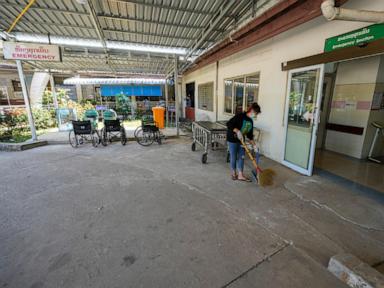
A rural tennis club is to create padel courts to help it remain "competitive and viable". Holcombe Brook Sports and Tennis Club on Hazel Hall Lane in Ramsbottom has gained planning permission to alter two of its outdoor courts to provide padel facilities. The application described padel tennis as "the fastest-growing sport in the world" with its fast-paced play attracting a growing number of players.
The padel courts will be available to the public on a pay to play basis without having to be a club member. The club said it wished to make the courts "accessible to all in the local community". The changes at the club inlclude altering the existing tennis court boundary fencing to include a galvanised steel frame with a mesh covering and a fabric mesh top with toughened glass and rebound panels.
The new courts in Ramsbottom is the second application for padel facilities to be approved by Bury Council in the past three months. In September plans for padel club with seven courts to be built on playing fields in Prestwich were approved. Pure Padel Clubs Ltd will build the new club on land formerly known as Brooklands playing fields at the Manchester Maccabi Community and Sports Club on Bury Old Road.
That club will have four covered padel courts, an uncovered padel court, two pickleball courts, a clubhouse and revised car and cycling parking. A planning statement in support of the Holcombe Brook plans said: “The tennis club needs to be as attractive as possible for existing and future members, particularly in the winter and autumn months when the weather is inclement. “We have to compete with indoor tennis and now associated padel facilities in other areas.
“The granting of planning permission would support a growing tennis membership and ensure that the club remains competitive and viable.” Planners at Bury Council approved the plans, deciding that the changes were not inappropriate development within the green belt..














